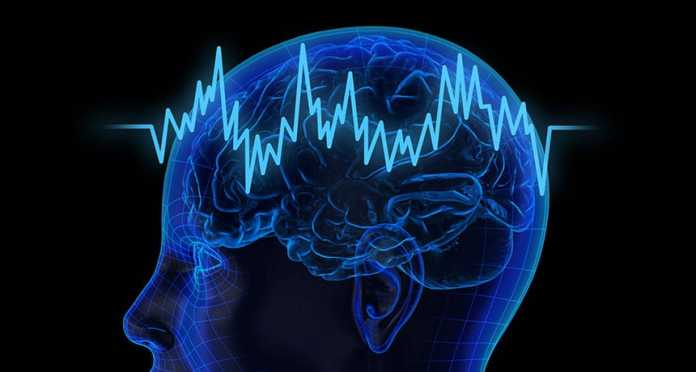NY Times Editor’s note: Diagnosis is a groundbreaking documentary series from The New York Times and Netflix that harnesses the power of you, our readers, to help find diagnoses for people suffering from mysterious medical conditions.
In the story below, Dr. Lisa Sanders, the creator of the long-running column in The New York Times Magazine, shares details of unsolved patient cases for you to diagnose.
Whether you’re a doctor, a patient or an amateur medical sleuth, your ideas could potentially help save a life. Readers with the most promising suggestions may be included in an eight-part Netflix series that will air in 2019.
Repeat Seizures, Memory Loss and Wild Mood
Swings: What Is Happening to This Man?
By LISA SANDERS, M.D
The early-morning quiet was interrupted by the sound of a large object falling. “Willie?” the middle-aged woman called out to her husband, who moments earlier disappeared into the bathroom for his daily prework shower. “Willie?” she repeated, moving to the bathroom door. Hearing no answer, she opened the door. Her 43-year-old husband was lying on the floor, his eyes just a sliver of brown iris, above bloodshot white. His arms and legs were jerking. There was blood all over his face and on the floor around his head. Her husband of 16 years was having a seizure.
Their tiny poodle had followed her and now stood outside the bathroom door barking. Even she knew this wasn’t right. The woman dropped to her knees and slid her hands behind her husband’s head searching for a cut. Where was all this blood coming from? His thick dark hair was slick with the warm liquid but she couldn’t find a source. His mouth fell open, and a stream of blood escaped his purplish lips, running down the side of his face. Blood filled his mouth as if it were some kind of cup. Was she going to have to do CPR on him, she wondered? She turned his face to the side and an unimaginable amount of blood flowed out of his mouth and onto the floor. A normal ruddy color came back into his lips. “Call 911,” she shouted to her 14-year-old daughter. “And don’t come in here.”
By the time the E.M.T.s arrived, the seizure was over, the man had regained consciousness and his wife had helped him sit up. His head left a bloody mark on the shower door, and he babbled senselessly. His speech was so slurred she could barely understand him. Was that from the cut on his tongue, or had he had a stroke? By the time the ambulance got the man to Memorial Medical Center, in nearby Las Cruces, N.M., he was making more sense, but his words were still garbled.
In the emergency department his blood pressure was dangerously high — he hadn’t taken his blood pressure medications, maybe not for days, he admitted. He was having trouble with his memory. These days nothing seemed to stick in his brain, and that included the need to take his pills. Could this very high blood pressure be the reason he had a seizure? the woman asked the E.R. doctors. No one could tell her. Other than his blood pressure, his exam was normal, the E.R. doctor said, so it didn’t look as if he had a stroke. Blood tests showed only an elevated white-blood-cell count — not uncommon after a seizure. And his liver tests were a little abnormal. Did he drink a lot? Sometimes, she reported. That could have been why. A head CT was unremarkable, with no sign of a stroke or a mass or an infection, or indeed anything that might have triggered this seizure.
The E.D. doctor called a neurologist, who recommended starting him on a medication called Keppra to prevent seizures and arranged for him to be seen in his office the following day. A copy of the notes and results from that E.D. visit can be seen here.
The next day, Willie went to see the neurologist. The doctor took a thorough history: Willie had never had a seizure of any type before; no head trauma or stroke or surgery. No double vision, or difficulty speaking or swallowing. He was very hard of hearing in his right ear and sometimes had episodes of dizziness, but that started nearly a decade earlier. Back then, an ear, nose and throat doctor told him that he had something called Meniere’s disease. (Meniere’s is a disorder of the inner ear that is characterized by hearing loss, tinnitus and episodic vertigo.) That problem had been stable for years. He had high blood pressure and took a medicine for that. Otherwise, he had been healthy his whole life.
Again, a careful examination revealed nothing. The neurologist ordered an electroencephalogram (EEG) to try to localize the source and identify the type of seizure. He also ordered an M.R.I. of Willie’s brain. M.R.I.s can show anatomy not seen by a CT scanner. The doctor reminded the patient and his wife how important it was for him to take his medication every day and instructed him not to drive until they were certain his seizures were under control. And they were to come back to see him in three months.
↓
Searching For the Source
Seizures are relatively common events, with 1 in 10 adults having at least one in their lifetime. And for up to half, it will be the only seizure they ever have. There are many types of seizures. Some can be restricted to a single area of the brain. Others, like the type this patient had, spread throughout the brain, first causing all the muscles in the body to tighten and then to jerk. After a generalized type of seizure the patient usually falls into a deep sleep and is often confused upon awakening. Seizures can be caused by something systemic and potentially treatable — like an infection or a toxic ingestion — or can be triggered by an abnormality in the brain itself. This latter kind can result in repeated seizures and require anti-seizure medications. The EEG and M.R.I. are done to help identify the possible causes of a first seizure. And to see if he was likely to have another. For most patients with a first seizure, however, both tests are likely to be normal.
The EEG and M.R.I. were done the next day. The EEG was normal, but the M.R.I. was not. The neurologist brought the patient and his wife back to the office so he could give them the results in person. They were worrisome. The M.R.I. showed several poorly defined bright areas at the top of the brainstem near the center of the brain. The largest was a little larger that the gum balls you might get from a machine, in an area of the brain called the pons. There were other areas of brightness, higher in the midbrain, forward near the bottom of the frontal lobes and to both sides in the temporal lobes. The radiologist’s report listed several possible causes for these extensive changes. None of them were good news.
On the top of the radiologist’s list: infection. Could this be some kind of infection of the brain itself? The herpes virus is the most common. Lyme disease and other tick-borne infections can do it as well as tuberculosis and a bacteria called mycoplasma, which usually causes “walking” or atypical pneumonias. Cancer that spread to the brain was another frightening possibility. Finally, autoimmune diseases like multiple sclerosis or lupus were also possible.
The neurologist thought infection was very unlikely. Other than the seizure, the patient had no symptoms at all. He was more concerned about some type of cancer. He arranged for the patient to see an oncologist the following day. The oncologist sent him for a CT scan of his chest, abdomen and pelvis. All normal. The neurologist then arranged for a spinal tap. The fluid from the tap contained more protein than normal but showed no evidence of a cancer or of infection. There was no sign of an autoimmune disease in either the patient’s spinal fluid or blood.
The patient was referred to an infectious disease specialist who tested him for many possibilities. None of the tests were revealing. Notes from these visits and test results can be seen here.
↓
Memories Lost and a Frightening Episode
In between doctor visits and trips to the hospital for additional testing, Willie and his family tried to live their lives. Willie worked in law enforcement but found himself able to do less and less. He was forgetting so much that it was hard for him to do his job. He gave up drinking after that first seizure. The doctor in the E.D. and his neurologist had persuaded him that while it hadn’t caused the seizure, it was probably not helping.
Giving it up hadn’t helped his memory. If anything, it made it clear to him and his wife just how much of his life he’d lost. Days after his seizure, his mother was visiting him. He asked about a close friend of the family’s, saying he hadn’t seen her for a while. His mother’s face froze. He watched as his mother and wife exchanged looks. “Sweetheart,” his wife said quietly, “your friend died a few months ago.” You went to the funeral. Even with this reminder he had no memory of this terrible loss. He felt hot tears flow uncontrollably down his face; he got up and walked out of the room. What was happening to him?
He went to Memorial Medical Center the second time three months later. It wasn’t for a seizure but for something else, which seemed to him and his wife even scarier. That day started off like any other. But when Willie’s wife got home from her job, their daughter met her at the door.” Mommy,” she said, “something is wrong with Daddy.” She hurried into the kitchen and found her husband sitting at the table eyes fixed in front of him, as if looking at something no one else could see. She said his name. He didn’t answer. She said it again louder; then again and again. Finally, he answered. He was fine, just fine, he answered without looking at her. Nothing was the matter, he said in a strange and quiet voice. And yet it was clear to both his wife and daughter that something was very much the matter.
Her first thought was that maybe her husband was drunk. Until then she believed him when he told her he hadn’t touched a drop since his seizure. Now she wasn’t sure. “Willie, have you been drinking?” She asked him over and over again. No drinking, he told her, when he finally seemed to understand what she was asking. Now she was really worried. If it wasn’t beer, what was happening?
She helped her husband into the car and drove to the E.R. He was calm, but distant. As if, somehow, he was not really there, in his body. In the E.R. his oxygen level was found to be dangerously low. A chest X-ray and then CT scan showed nothing. A head CT was likewise completely unremarkable. He was admitted to the hospital with a diagnosis of pneumonia and started on antibiotics. It never seemed like the right diagnosis, to either his doctors or his wife. He had no cough, no fever, and his chest X-ray was normal. And by the time he was transferred from the emergency room into the hospital, he was back to his usual self — forgetful but awake and alert, caring and kind. After three days, he was discharged on antibiotics and told to follow up with his primary-care provider at the V.A. hospital. You can see some of the notes from that hospitalization here.
Willie’s wife didn’t know what to make of it, and neither did Willie’s neurologist.
↓
The Mood Swings Begin
Willie had a second seizure a few months later. It was early in the morning, and his wife felt him moving around in the bed as if arranging the covers. She rolled over to look at him and saw him jerking in that immediately recognizable way. She let the seizure pass, making sure that he didn’t get too close to the edge of the bed and that he was breathing. She didn’t go to the hospital. They didn’t seem to have any idea of what was wrong with her husband. She called his neurologist, and he increased the dose of the anti-seizure medication.
As the days and weeks passed, it was clear that her husband was getting worse. Every day he seemed to remember less and less of their lives together. He asked her to tell him the story of their daughter’s birth. He couldn’t remember. He was in the Army and had been deployed to Iraq as part of Desert Storm. And yet now he couldn’t remember where he went in Iraq or even the names of any of his buddies. The men he’d spent every day and night with for months. Gone. As if Desert Storm had never happened. He confessed to his wife that he was worried that one day he would wake up and not even remember her or his daughter. She tried to reassure him, but she had the same worry.
But that wasn’t the only change. Over the past few months he’d become wildly emotional. Every day, sometimes several times a day, he would become overwhelmed with sadness, and tears would roll down his wide, tanned cheeks. He was helpless to stop them. He had no control. He couldn’t make himself think of happy thoughts the way his wife suggested. When these spells came upon him he felt as if he couldn’t think at all.
Even before this second seizure, the neurologist referred the patient to the Epilepsy Center at the University of New Mexico in Albuquerque. It was three hours away, but he’d done everything he could think of to help this middle-aged man with mysterious brain lesions. He simply needed more expertise than he could provide.
↓
Consulting More Experts
Willie’s wife called the Clinical Neuroscience Center in Albuquerque. They couldn’t schedule him an appointment for months. She made the appointment but was overwhelmed by the thought of how much more he might lose before he could be seen.
Willie’s aunt suggested that they take him to the Mayo Clinic. There was a branch a few hours away in Scottsdale, Arizona. She sent an email describing her husband’s illness. They called her within a week with questions, then scheduled an appointment for Willie to be seen. They told her they would need her husband’s records, so she contacted all his doctors and collected them. And then she packed her husband and daughter into the car.
Over the next year, she and her husband traveled to Scottsdale a half dozen times. He had repeat M.R.I.’s, more spinal taps, dozens of tests performed on his blood and the fluid taken from his spine. He had nearly a month of high-dose steroids to treat a possible autoimmune disorder. After six months of testing and treatment, the decision was made to get tissue from the brain itself. His largest lesion was deep inside a part of the brain known as the pons. Many of the most important nerves in the brain pass through that region. It is the Grand Central Terminal for much of the brain — serving as a connecting point between the various parts. Once the decision was made to take some of the brain tissue, this seemed the best place to look. The risk of damaging this key pathway was present, but it was thought to be the most likely spot to provide answers. And yet it didn’t. That biopsy showed only nonspecific signs of chronic inflammation. No sign of what might be driving that inflammation.
A decision was made to try a different spot. And three months later a second biopsy was taken. This was likewise unrevealing. A few notes from his many visits to Mayo can be seen here.
Last October, just weeks after that second, unsuccessful biopsy, the patient lost his job. Willie’s first seizure occurred in February 2016. It’s been nearly two and a half years and while his seizures are under control, he continues to worsen. His hearing is worse; his memory is worse; and he continues to have uncontrollable mood shifts that can reduce him to tears in a heartbeat.
Willie’s wife is beginning to think that much of what her husband has lost may never be regained. But she continues to hope that somehow, someone will be able to come up with a diagnosis and that maybe then, they will be able to stop the losses. And despite all that’s happened to him, Willie still has some of his old sense of humor. If he loses everything, he joked to me, then he’d have to depend on his wife and daughter to make him a video reminding him of who they are and what he’s been through. It will be, his wife adds, their own version of 50 First Dates, a reference to the 2004 film with Drew Barrymore and Adam Sandler. Willie laughs. So do his wife and daughter. But, at the same time, tears stream down all three faces.
Do you have any thoughts on what could be eating away Willie’s memory and brain? Any recommendations on what Willie and his wife and doctors should consider next?
Enter your comments at link below, and briefly describe your thinking; how a diagnosis is made is often as revealing as the diagnosis itself. All answers will be reviewed, and the most promising diagnoses will be shared with the patient and his primary-care physicians.
I’ll post an update in the coming days.
Click to enter your data and info >>>
All content herein is owned by author exclusively. Expressed opinions are NOT necessarily the views of VNR, authors, affiliates, advertisers, sponsors, partners, technicians, or VT Network. Some content may be satirical in nature.
All images within are full responsibility of the author and NOT VNR.
Read Full Policy Notice - Comment Policy





































